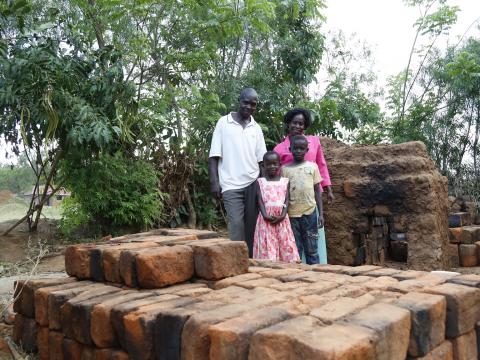Improved Water Access Increases Family’s Fortune

By Susan Otieno, Communications Officer, World Vision in Kenya
Eight years ago, when Joan, 36, and her husband Joseph, 40, got into the brick-making business, water was a problem.
As such, Joan had to make several trips to a well, approximately one kilometre away from her home, in Rwatama Village of Kenya’s Busia County.
“I would carry water on my head and make several trips to fill three 200 Litre capacity drums that my husband would mix with sand soil to make the bricks.”
About 600 litres of water is needed to make approximately 2,000 bricks. Joan had no choice; she had to get the water required.
Thanks to World Vision, Joan and Joseph are now happy since they can access clean water from a water kiosk that is less than 100 metres from their home.
This has made it possible for them to double the number of bricks manufactured during each production cycle - from the previous 2,000 to 4,000.
The water kiosk is part of the Angurai Community Water Project whose construction was done by World Vision with the support of donors from South Korea and finances from the Kenya Integrated WASH Initiative (KIWI) grant.
Upon its completion, the water project was handed over to the County Government of Busia in November 2018. The water project is made up of a water pipeline distribution system covering 40.6 Kilometres and serving more than 20,000 people.
Ultimately, the water is expected to reach about 65,000 people through an increase in the water pipeline infrastructure.
“We are happy because the water kiosk has cut the time used to fetch water and the hard labour involved. We can now concentrate on growing the brick business,” said John.
He revealed that in November 2018, they sold 1,000 bricks and got 8,000 Kenya shillings ($78 US) from the trade.
“The money from the bricks has enabled us to buy farm inputs, give our children a good education and buy new iron sheets for our house, which was in bad shape before, ” said Joan.
Above all, she is happy that her children now drink clean water. “The contaminated water used to give them stomach aches and diarrhoea that would sometimes cause them to miss school.”
Learn more about our Water, Sanitation and Hygiene projects here.